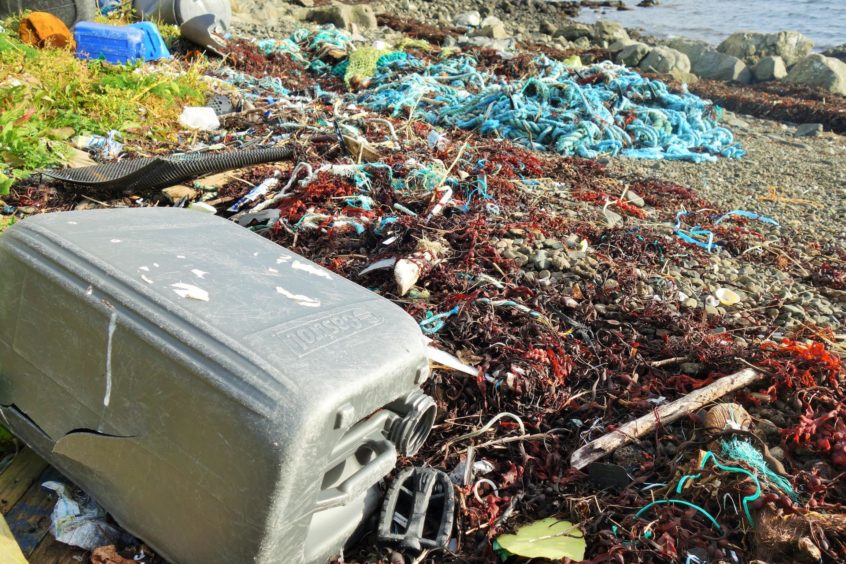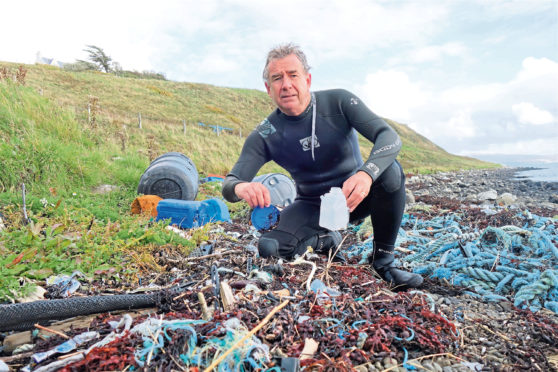It had been an enjoyable snorkel, having taken to the water by this remote rocky cove on Waternish in Skye, with the distant hills of South Uist twinkling on the far horizon.
Marine life abounded at every turn; shoals of young saithe flashed over flat-fronded kelp beds and the saucer-shaped form of a crystal jellyfish pulsed past me like a beating heart.
The water was remarkably clear, but it was well into October, and with the lateness of the season, I knew this would probably be my last snorkel of the year. As such, I stayed in the water for as long as the cold would permit, totally absorbed by nature’s undersea tapestry of life and colour.
On emerging from the sea, shivering and dripping, my exhilaration turned swiftly into despair, for on the strandline an atrocity lay before me. Plastic, and it was everywhere. It was an abomination that struck at the very heart of the respect we should have for our planet; a proliferation of plastic bottles, cartons, fishing net fragments and the like.
I walked slowly along the shore and started examining this plastic perversion, depressed and shocked in equal measure.
Typically, several thousand items of marine plastic pollution are found per mile of beach in the UK, and it is thought that more than eight million tonnes of plastic enter the world oceans each year.

The end-result is horrifying with recent studies showing that every single seal, whale, and dolphin washed-up on British shores had traces of plastic in their stomachs, as did every fulmar. Plastic is ingested by fish and shellfish and has even been discovered in our deepest living marine organisms. It is everywhere, an omnipresent threat that is choking the lifeblood out of our precious marine environment, and with that, threatening humanity, too.
Our addiction to single use plastic is largely to blame – over half of plastics come under that category, and one just to has to think of a typical supermarket basket shop and the amount of plastic packaging involved. In 2018 alone, UK supermarkets and their suppliers produced one million tonnes of plastic. Does that cucumber really need to be shrink-wrapped? I think not.
So, what can be done? Well, Governments, of course, must act with urgency to legislate, and set and enforce targets to reduce our reliance on plastics. Manufacturers need to innovate and develop alternatives, and, of course, every individual has a responsibility, too.
Four simple steps can make a real difference: where possible, refuse to buy inappropriately packaged products, consider non-plastic alternatives, reuse plastic, and, of course, recycle it.
Who knows, if such action is taken by us all, maybe in the not too distant future, the only objects found in among the seaweed on this remote strandline on Skye will be crab shells, gull feathers and other natural debris. Now, there’s a wonderful thought.
Info
A sperm whale washed ashore in Harris had a 100kg ‘litter ball’ in its stomach that included fishing nets, rope, packing straps, bags, gloves, tubing, and plastic cups.
